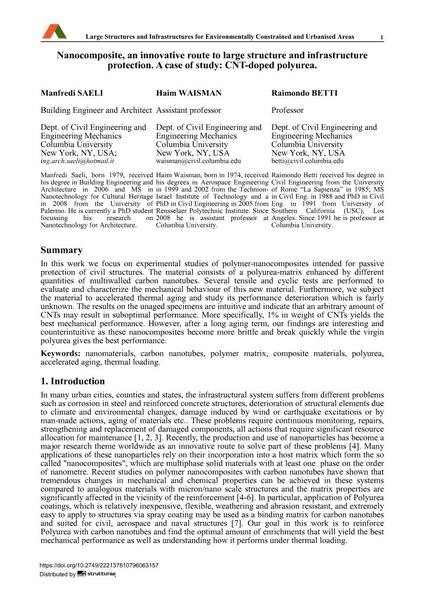Nanocomposite, an innovative route to large structure and infrastructure protection. A case of study: CNT-doped polyurea.

|
|
|||||||||||
Bibliographic Details
| Author(s): |
Manfredi Saeli
Haim Waisman Raimondo Betti |
||||
|---|---|---|---|---|---|
| Medium: | conference paper | ||||
| Language(s): | English | ||||
| Conference: | IABSE Symposium: Large Structures and Infrastructures for Environmentally Constrained and Urbanised Areas, Venice, Italy, 22-24 September 2010 | ||||
| Published in: | IABSE Symposium Venice 2010 | ||||
|
|||||
| Page(s): | 650-651 | ||||
| Total no. of pages: | 8 | ||||
| Year: | 2010 | ||||
| DOI: | 10.2749/222137810796063157 | ||||
| Abstract: |
In this work we focus on experimental studies of polymer-nanocomposites intended for passive protection of civil structures. The material consists of a polyurea-matrix enhanced by different quantities of multiwalled carbon nanotubes. Several tensile and cyclic tests are performed to evaluate and characterize the mechanical behaviour of this new material. Furthermore, we subject the material to accelerated thermal aging and study its performance deterioration which is fairly unknown. The results on the unaged specimens are intuitive and indicate that an arbitrary amount of CNTs may result in suboptimal performance. More specifically, 1% in weight of CNTs yields the best mechanical performance. However, after a long aging term, our findings are interesting and counterintuitive as these nanocomposites become more brittle and break quickly while the virgin polyurea gives the best performance. |
||||
| Keywords: |
composite materials thermal loading Carbon nanotubes nanomaterials polymer matrix polyurea accelerated aging
|
||||
